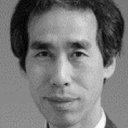Semiology of hyperkinetic seizures of frontal versus temporal lobe origin.
Açar sözlər
Mücərrəd
Hyperkinetic seizures are usually associated with frontal lobe epilepsy. However, some patients have hyperkinetic seizures of temporal lobe origin. The semiological differences in hyperkinetic seizures between frontal and temporal lobe epilepsy have not been well studied. Here, we retrospectively assessed ictal semiology in order to distinguish between hyperkinetic seizures of frontal lobe origin and those of temporal lobe origin. We retrospectively reviewed data on patients who had undergone surgery for hyperkinetic seizures of temporal or frontal lobe origin and achieved favourable seizure outcomes (Engel Class I) with a minimum postoperative follow-up of 24 months. We reviewed seizure histories, imaging reports, video-EEG monitoring data, operative records, and pathological findings. We analysed and compared the hyperkinetic semiology of video-recorded seizures of temporal lobe origin and those of frontal lobe origin. Forty hyperkinetic seizures in eight patients (seven adult patients and one 12-year-old patient) with temporal lobe epilepsy and 45 hyperkinetic seizures in nine patients (eight adult patients and one 16-year-old patient) with frontal lobe epilepsy were analysed. Emotional facial expressions (such as fear, laughing, or anger), bilateral forceful elbow flexion, bilateral forceful grasping, facial flushing, and bilateral facial contraction were observed significantly more frequently in seizures of frontal lobe origin. Oroalimentary automatisms, seizures during wakefulness, salivation, and bilateral drop of the corners of the mouth were observed significantly more frequently in seizures of temporal lobe origin. Observation of a number of signs during hyperkinetic manifestations may help to predict whether a seizure originates from the frontal lobe or the temporal lobe.


